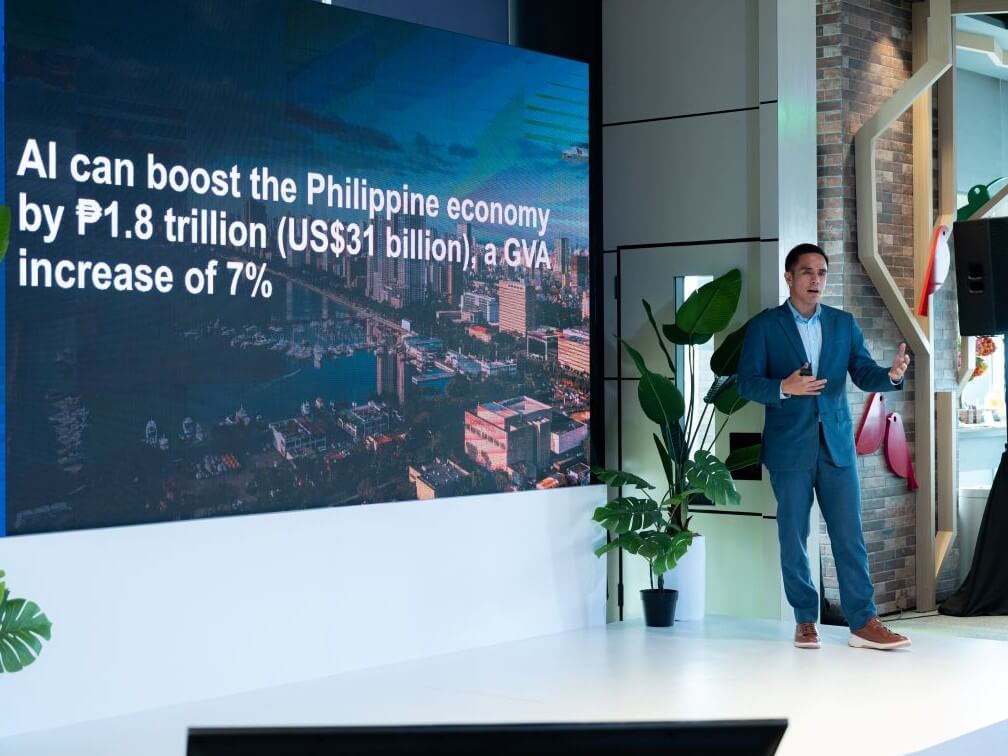

Commissioned by Google, the study "Turbocharging Growth: The Philippines’ AI Opportunity," said this potential uplift underscores AI’s role as a powerful driver of the country’s economic growth.
AI already in Filipinos’ daily lives
The report found that AI is already embedded in the daily routines of many Filipinos, with about half the population using AI-powered tools at least once a week. Public sentiment toward the technology is optimistic — 46 percent believe AI will benefit the country, while 50 percent expect it to have a positive impact on their own lives.
"AI is more than just a buzzword; it's a powerful tool that can help every Filipino—from students to parents to business owners—thrive in a rapidly changing world," said Gabby Roxas, country marketing manager for Google Philippines and Vietnam.
"This report gives us a clear picture of what's possible, and it’s up to all of us to ensure we have the skills needed to seize this incredible opportunity.”
Billions in productivity gains
The Public First study estimates AI could significantly improve productivity for 37 percent of the Philippine workforce. The average worker could save up to three hours a week on administrative tasks, leading to potential wage growth of more than 6 percent and boosting annual productivity by over ₱110,000 per person.
Three sectors stand to gain the most in gross value added:
Wholesale and Retail: ₱410 billion potential increase
Finance and Insurance: ₱300 billion potential increase
Public Administration and Defense: ₱109 billion potential increase
Beyond direct economic gains, AI applications could help reduce the cost of cybersecurity threats by half — saving the economy an estimated ₱180 billion — and increase agricultural output by ₱120 billion by 2035 through precision farming and early pest detection.
New jobs, new skills
While AI will automate some tasks, the report stresses that it will also create new roles in managing AI systems, developing algorithms, and performing higher-value work.
This shift underscores the need for large-scale upskilling, with 90 percent of surveyed workers expressing interest in training to understand how AI models function.
Building an AI-ready workforce
Google reaffirmed its commitment to equipping Filipinos with AI skills through expanded training programs. The company partners with the Department of Trade and Industry, the Department of Information and Communications Technology, and the IT and Business Process Association of the Philippines (IBPAP) to offer Google Career Certificates, including the AI Essentials course.
Google also announced it is providing Accenture with access to these certificates to help train and upskill Accenture-supported communities, as well as families of its employees.
Accenture’s AI skills push
Accenture, one of the country’s largest employers, has built a wide range of initiatives to prepare Filipinos for an AI-driven economy. The company collaborates with government agencies, industry organizations, and academic institutions to strengthen the country’s talent pool.
"At Accenture, we're committed to upskilling communities for AI, empowering individuals to drive innovation and economic growth," said Rudy Guiao, managing director and corporate citizenship lead for Accenture in the Philippines.
"We believe that our investments in AI education and training can bridge the skills gap and promote digital inclusion, creating a more equitable future. This commitment is a cornerstone of our corporate social responsibility efforts in the Philippines and beyond."
Seizing the AI opportunity
Public First’s findings emphasize that realizing AI’s full potential will require coordinated action between the public and private sectors. Investment in infrastructure, governance, and especially workforce training will be key to converting AI’s promise into tangible results.
Google said it remains committed to supporting these national efforts through its skilling programs, aiming to empower Filipinos “with the knowledge and tools they need to build a prosperous and digitally enabled Philippines.” —Ed: Corrie S. Narisma
